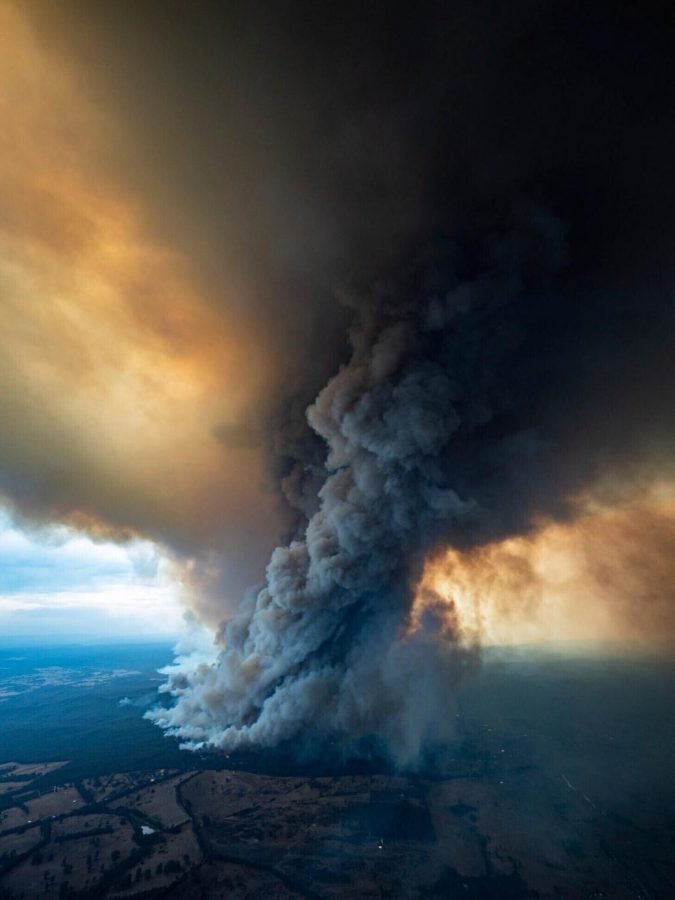Burned to the ground
Australian, global wildfires increasing in number, danger
According to the United States Forest Service, more than 73,000 wildfires burn every year for a total of seven million acres being covered by fire in the United States. The last major fire in the United States was the 2019 California fires, which burned 259,823 acres from over 7,860 total fires. The Amazon rainforest fires also received media coverage where 2.24 million acres were burned. Currently, Australia is facing an unprecedented amount of fire. The fires have covered 15.6 million acres of bushes, parks and forests.
Within the Australian fires, various families have been displaced due to the danger. In total, the fires have claimed at least 24 lives. Humans aren’t the only ones the fire has affected. An estimate from an ecologist at the University of Sydney places an estimate that over one billion animals have died from the fires since September 2019, though other sources place the number closer to half a billion. Various programs have donated money to help save these animals so more do not get killed in the fires.
A variety of factors have brought the current circumstances to Australia. A mixture of record-breaking heat, prolonged drought and strong winds all helped to fuel the fire. In an effort to catch those responsible for the start of the blaze, 183 people are facing charges. Of those, 24 are said to have deliberately started the fires while the rest accidentally caused them. This included scenarios like forgetting to put out a campfire or not extinguishing a cigarette.
Since the fires have started, several maps have surfaced online comparing the size of the fires and surrounding smoke to other countries like Europe and the United States. The area of fire covers 60,000 km2 and the smoke covers 5.5 million km2. The smoke coming from the fires can be seen from New Zealand and even parts of South America.
One of the side effects of the fires is the ash. The ash is getting carried on the wind and is landing on glaciers and is causing them to melt up to 30 percent faster and is staining the snow and ice.
Australia is not the only one facing major fires, though. According to data from the Sentinel-3 World Fire Atlas, there were almost five times more wildfires in August 2019 than August 2018. Most of these fires occurred in Asia with a total of 49 percent of the world’s total wildfires. A website called Global Forest Watch displays all of the fires in the world over a period of time. Users are able to draw around areas to see how many fires occurred in that area.
Many of these fires are a result of global warming, which carbon emissions cause. Many sources state that unless global carbon emissions decrease. Conditions will continue to get drier and in turn create more fires. As a result, many experts are pushing for more attention to discussions regarding climate change and global warming.



